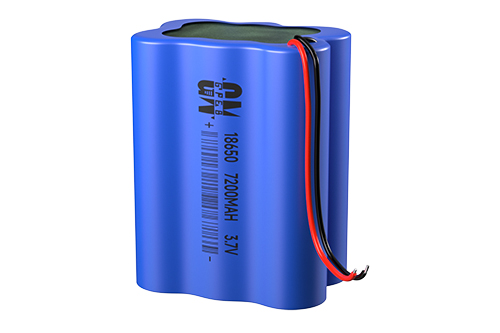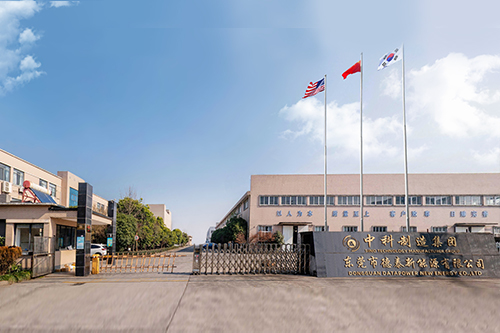Research progress on carbon negative electrode materials for supercapacitor
batteries?
1 Introduction to supercapacitor batteries
Supercapacitor battery refers to a new energy storage device that combines
double-layer capacitor energy storage and lithium ion de/intercalation energy
storage. It has high energy density and high power density and is expected to be
used in special aerospace, special specialties, electric vehicles, Energy
storage devices with high energy density, high power density and other
performance are widely used in fields such as electronic information and
instrumentation that urgently need it. At present, research on supercapacitor
battery energy storage devices has gradually become a hot topic.
As one of the key materials for supercapacitor batteries, the negative
electrode material should have the characteristics of both lithium-ion battery
negative electrode materials and supercapacitor electrode materials. So far,
among the negative electrode materials for lithium-ion secondary batteries and
supercapacitor negative electrode materials, carbon materials are the only ones
commercialized, and there is still a lot of room for development in new and
high-performance development. Therefore, carbon materials are still the most
popular for lithium-ion secondary batteries. One of the hot spots in the
research field of secondary battery anode materials and supercapacitor anode
materials. Choosing carbon materials with wide sources, cheap prices and
excellent performance as negative electrode materials for supercapacitor
batteries has broad application prospects.
At present, there are relatively few studies specifically focusing on
carbon negative electrode materials for supercapacitor batteries, but there are
reports in the literature that certain methods have been used to prepare carbon
materials that have both excellent double layer capacitance performance and
lithium-ion battery performance. This article mainly reviews the current
research status of carbon materials that have both double-layer capacitor and
lithium-ion battery properties, points out the current shortcomings of these
materials, and analyzes the future research directions of carbon anode materials
for supercapacitor batteries.
2 Research progress on carbon negative electrode materials for
supercapacitor batteries
In order to meet the requirements of lithium ion removal/intercalation
energy storage, the negative electrode of a supercapacitor battery should meet
the following requirements: small change in free energy during the insertion
reaction of lithium ions, high diffusivity of lithium ions in the solid
structure of the negative electrode, and a highly reversible insertion reaction.
It has good electrical conductivity, stable thermodynamic properties and does
not react with electrolytes. At the same time, in order to meet the needs of
good double-layer energy storage, as the negative electrode of supercapacitor
battery, it should also have good electrochemical stability, suitable pore
structure and specific surface area, high potential window and other properties
to ensure its performance at high voltage. The battery system has good
performance, especially high rate performance. Current research is mainly
divided into two categories: one is based on the fact that activated carbon
meets the double electric layer energy storage, and the graphite intercalation
compound satisfies the lithium ion de/intercalation energy storage, and the
activated carbon and graphite intercalation compound are combined; the other is
based on the double electric layer. According to the requirements of different
carbon pore sizes for layer energy storage and lithium ion de/intercalation
energy, different template methods are used to prepare carbon materials with
three-dimensional pores.
2.1 Activated carbon and graphite composite materials
Activated carbon is the earliest carbon electrode material used in
supercapacitors and is currently the most studied electrode material. As a
supercapacitor electrode material, the advantages of activated carbon lie in its
good conductivity, ultra-high specific surface area (up to more than 2000m2/g),
and controllable pore structure. In addition, activated carbon also has the
advantages of rich raw materials, low price, good processing performance, and
stable chemical properties. Among carbon anode materials for lithium-ion
batteries, graphite intercalation compounds (GIC) are the most successfully
used. Compared with other intercalation materials, this carbon material has
higher Faradaic capacity, high cycle efficiency and low electrochemical
potential. At present, mesophase carbon microspheres (CMS) among GIC negative
electrode materials, due to their spherical particles and highly ordered layer
stacking structure, are conducive to the insertion and deintercalation of
lithium ions from all directions of the sphere, avoiding the problems caused by
other graphite materials. Defects such as swelling, collapse and poor cycle
performance of graphite sheets caused by excessive anisotropy. CMS has become
one of the main anode materials used in long-life lithium-ion batteries and
power batteries due to its superior characteristics. The new negative electrode
material prepared by Li Jie et al. by combining activated carbon and CMS has a
specific capacity of 301.2mA·h/g in lithium-ion batteries and 25F/g in
supercapacitors, and the potential window is increased to 3.5VvsLi/Li+ , the
energy density is increased to 40.3W·h/kg. Because the outer coated carbon
material is also expected to protect the inner CMS, effectively preventing
damage to the CMS layers caused by the co-intercalation of solvated lithium ions
and organic solvents, it has better battery characteristics. However, this
carbon material has the following shortcomings when used in supercapacitor
batteries:
Read recommendations:
6F22
Is solid -state battery twice the ordinary battery?42v battery pack lithium ion direct sales
Model comparison table of button battery
603450 lipo battery
r03 battery











































 360° FACTORY VR TOUR
360° FACTORY VR TOUR
 Whatsapp
Whatsapp
 Tel
Tel Email
Email TOP
TOP